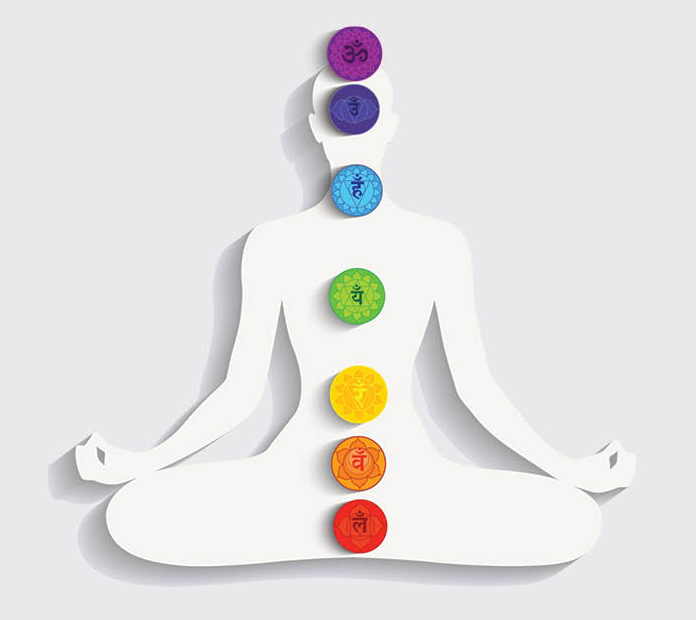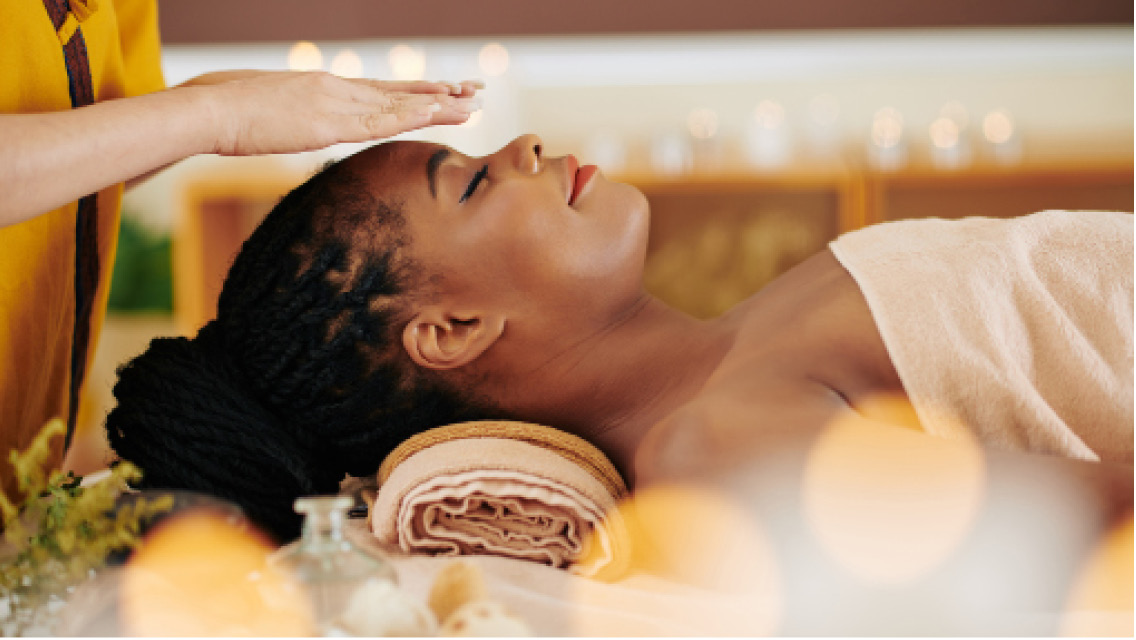If you’ve ever heard a yoga teacher mention chakras and wondered what they are, you’re not alone. There’s no corresponding concept in mainstream Western medicine to explain how, why, or where the body’s energies might gather — or get stuck.
Some of the earliest mentions of chakras are found in the Vedas of India, religious texts dated sometime between 1,500 and 500 BCE. The word “chakra” means “wheel” in Sanskrit, and according to Vedic tradition, the chakras are seven centers in the body where prana (Sanksrit for “energy”) collects and circulates.
This framework situates chakras as points of intersection in a larger network called the nadis, pictured on ancient anatomical maps as lines of energy within and around the body. (In Traditional Chinese Medicine, the nadis are called meridians.) These channels allow energy to travel between the body’s different parts, kind of like energetic highways.
 “I visualize the chakras to be like major hubs in a busy city,” explains Bridgette Shea, LAc, MAcOM, author of Handbook of Chinese Medicine and Ayurveda: An Integrated Practice of Ancient Healing Traditions. “The chakra would be the center square, and all the cars that drive around it and radiate out in all directions are the prana.”
“I visualize the chakras to be like major hubs in a busy city,” explains Bridgette Shea, LAc, MAcOM, author of Handbook of Chinese Medicine and Ayurveda: An Integrated Practice of Ancient Healing Traditions. “The chakra would be the center square, and all the cars that drive around it and radiate out in all directions are the prana.”
Each chakra is linked with its own color and a set of emotional qualities, and each corresponds to “a major nerve plexus or endocrine gland.”
The idea of chakras might feel forbiddingly esoteric, but the concept can offer some perspective on how our bodies circulate energy — or don’t. “The chakras exchange information with the outside world,” Shea explains. “Each has a specific set of functions that governs the physical body and the mind and is associated with the information they give and receive.”
Find the Flow
Some energy-medicine practitioners believe that when we’re enjoying good health and everything is going our way, energy is circulating freely in all seven chakras. By the same token, if we’re stuck in a particular area of life, energy could be blocked in the corresponding chakra. A practitioner may suggest exercises that involve visualizing the colors of that chakra to help get energy moving again.
The connection between color and energy is less airy than it sounds. “Each chakra is associated with a specific color,” explains energy-medicine practitioner Jill Blakeway, DACM, LAc. “Color is simply a wave traveling through space. Depending on the wavelength, our eyes register different colors. Visualizing a particular color can prompt your body to simulate that color’s wavelength.”
Blakeway is a practitioner of Chinese medicine who also writes about the science of energy-healing techniques. In her book Energy Medicine: The Science and Mystery of Healing, she describes the chakras as powerful energy centers used by healers in many traditions. She offers this meditation to help acquaint the curious with their own chakra system.
Chakra Meditation
Sit with a straight spine and breathe deeply into your abdomen throughout this exercise.
7th: Crown (Sahasrara)
Color: Violet
Blakeway suggests imagining violet light passing through the top of your head and permeating your body. “The crown chakra is associated with faith, trust, inspiration, and our connection to source.”
6th: Third Eye (Ajna)
Color: Indigo
Next, picture the center of your forehead being suffused with a dark blue light. “When [this chakra] is open, it gives us clarity, wisdom, spiritual insight, and sometimes clairvoyance,” she explains.
5th: Throat (Vishuddha)
Color: Blue
Visualize a pale blue light passing through your throat. “The throat chakra is about confidence, truth, and expression,” Blakeway notes.
4th: Heart (Anahata)
Color: Green
Now picture a funnel of green light over your chest, bringing energy to the heart. “The heart chakra is the center of love, connection to others, forgiveness, compassion, and generosity.”
3rd: Solar Plexus (Manipura)
Color: Yellow
For this step, picture yellow light running through your solar plexus. “This is the chakra related to our gut feelings and emotions,” she notes.
2nd: Sacral (Svadhisthana)
Color: Orange
Now send orange light to your sacrum, which is “associated with our sexuality and creativity, as well as our identity.”
1st: Root (Muladhara)
Color: Red
The root chakra is found at the base of the spine, where you can now picture red light. “It is associated with grounding, resilience, and physical survival.”
Natural Healing
Energy medicine has a long history across many cultures. Today, we also have research to confirm the value of these subtle modalities for health and well-being. Explore other articles in our Natural Healing department to learn how you can embrace these modalities in your own life.





This Post Has 0 Comments